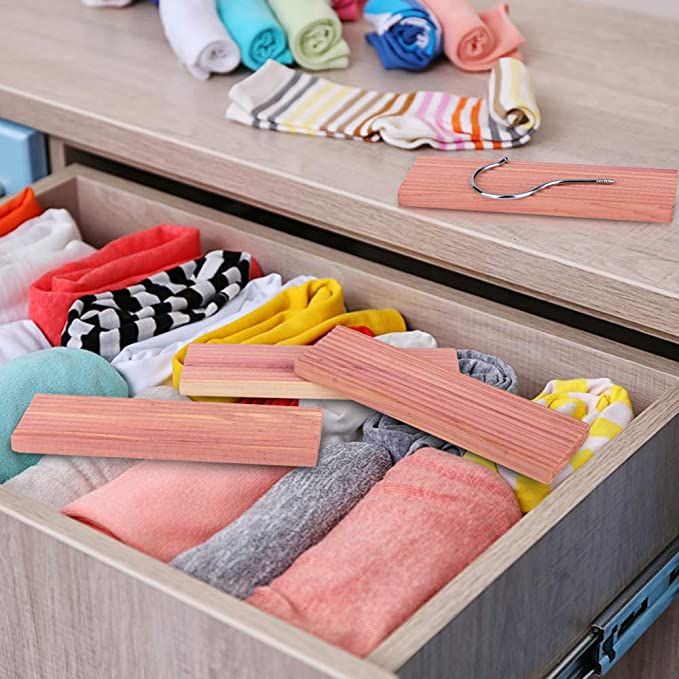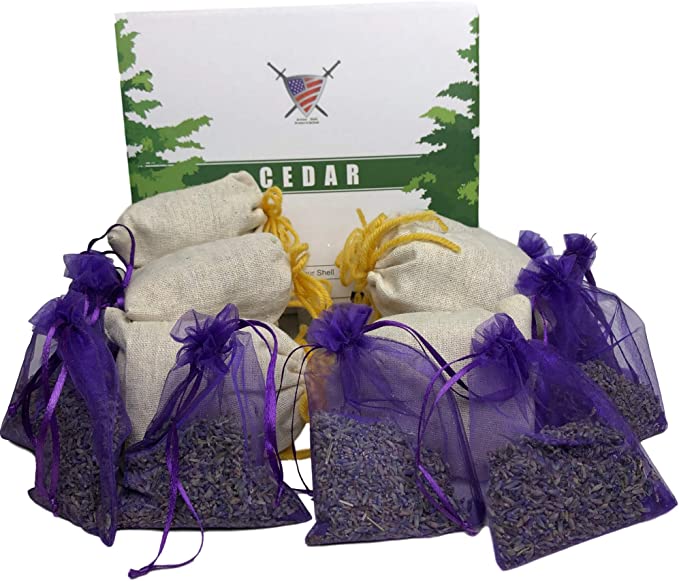Not to be confused with pantry moths, which feed on human food sources, clothes moths have a taste for wool and other “animal-based materials such as fur, silk, feathers, felt, and leather,” says ACE-certified entomologist Scot Hodges, VP of professional development and technical services at Arrow Exterminators. He adds that they like to hitch rides on “secondhand clothing, furniture, rugs, and blankets,” and if left unchecked, they can wreak irreparable damage to your duds. What’s more, most people won’t often know they’re there until the deed is done. At half an inch in size or smaller, moth larvae frequently go unnoticed—and “the larvae are the ones that do the damage,” says Hodges.
To avoid this from happening, Danser takes to baking secondhand wool fabric in the oven, whether or not fabric-munching moth larvae are present. If you are skeptical—either of the method’s effectiveness or its safety—that’s understandable, considering how unconventional it is. According to the University of California Statewide Integrated Pest Management Program though, it is possible to bake wool fabric. The article says “heating the infested item in an oven for at least 30 minutes at temperatures higher than 120℉” can prevent a possible plague of clothes moths in your home. You’ll find that the process is fairly simple, too.
How To Bake Wool Fabric To Get Rid of Clothes Moths
If you want to bake wool fabric, here is Danser’s tried-and-true method.
Materials
Cookie/baking tray
1. Place the woolen garment on a cookie tray.
2. Heat the oven to the lowest possible temperature—or, ideally, to 120℉.
3. Leave the woolen item in the oven for 30 or 45 minutes at most.
One warning from Danser: You’ll want to avoid baking woolen items with plastic pieces, like buttons and zippers, or synthetic materials. San Francisco-based textile expert Saana Baker echoes this sentiment, adding, “if it’s blended with polyester or other non-wool fibers, then you might just melt the whole thing.” If you’re unsure about the fabric content, Baker recommends avoiding the oven-baking method altogether and instead opting for an alternative method to get rid of potential clothes moths.
Alternative Ways To Get Rid of Clothes Moths From Thrifted Wool Fabric
Wash or Dry Clean Wool Fabric
According to the University of California Statewide Integrated Pest Management Program, “laundering [woolen items] for 20 to 30 minutes in water that is at least 120℉” can effectively kill clothes moths and their larvae, with the caveat that “many woolen items shouldn’t be washed in hot water.” Baker agrees that it’s best to wash them in cool water temperatures, and with this in mind, you might want to consider dry cleaning wool items to prevent damaging the fabric.
Chill Wool Fabric in the Freezer
If you want to avoid washing or dry cleaning a woolen item, consider putting it in the freezer—because, apart from high heat, clothes moths can’t typically survive in cold temperatures. “Put it in the freezer for a couple of days,” says Baker. She also mentions that you’ll want to place the item in a Ziplock or zip-top plastic bag. Otherwise, the item itself will freeze, which can potentially damage the fabric, particularly if it shouldn’t be exposed to water.
How To Prevent Future Clothes Moth Infestations
You might have done your due diligence to get rid of clothes moths, but this won’t always prevent them from attempting to make a reappearance. To avoid future clothes moth infestation, it pays to be prepared. “Deep cleaning and vacuuming a couple of times a year can be helpful,” says Hodges, “and overall reducing clutter in storage areas such as closets and cabinets.” He explains: “Moths prefer dark, undisturbed areas, so limiting the harborage from clutter will give them fewer places to hide.”
He also recommends laundering or dry cleaning clothes regularly. “Soiled or worn clothing is more attractive to moths than clean clothing, although they will feed on either,” he says. With this in mind, you may want to pack off-season clothing in bins or bags. According to Hodges, airtight options are ideal for keeping clothes moths away. Mothballs can also repel the pest, and though effective, you may want to avoid using them as the insecticide isn’t kid or pet-friendly—and breathing in their fumes can make you ill. Consider, instead, cedar or lavender, which are popular choices used to deter moths, though Baker admits that reviews are mixed regarding their effectiveness. However, there’s no harm in trying them—and at the very least, they’ll make your closet and clothes smell nice.

Iris Usa, 30-Quart Weathertight Storage Box — $25.00
Made of heavy-duty plastic, this storage box comes with a locking lid and eight sizes (6.5 to 103 quarts). According to one Amazon reviewer, it’s also “moth-proof”—something which many others have agreed—making it ideal to protect off-season clothes and bedding from pests.

Acmetop, Cedar Blocks (15-Pack) — $20.00
You can place these cedar blocks in the corner of your closet, in drawers, or use the hooks to hang them on a clothing rod. The manufacturer notes that the cedar blocks will lose their scent over time, but you can “reactivate” it by sanding them down with sandpaper.

Armour Shell, Moth Repellent Sachets (20-Pack) — $26.00
You can place a few of these pre-filled lavender and cedar sachets in your closet, dresser drawers, or storage containers to repel pesky clothes moths. The set comes with 10 sachets filled with dried lavender flowers and 10 sachets with cedar wood shavings.
Frequently Asked Questions About Clothes Moths
Do moths prefer clean or dirty clothes?
According to ACE-certified entomologist Scot Hodges, VP of professional development and technical services at Arrow Exterminators, clothes moths are typically attracted to soiled or worn clothing, though he mentions they will feed on clean clothes, too.
How do moths get into wool garments?
Clothes moths have an affinity for wool and other animal-based materials, where they will typically lay their eggs. They can arrive by way of other infested items like secondhand clothing or furniture. According to Hodges: “They can also occur due to the presence of animal nesting materials or carcasses they may be feeding on.”
Does washing wool get rid of moths?
Washing wool in water that’s at least 120℉ can effectively get rid of clothes moths, though it isn’t recommended to launder woolen items in hot water—it will damage the fabric. You can, however, consider dry cleaning the item, chilling it in the freezer, or if it’s made without plastic pieces or synthetic materials, heating it in the oven.
Our editors independently select these products. Making a purchase through our links may earn Well+Good a commission.
